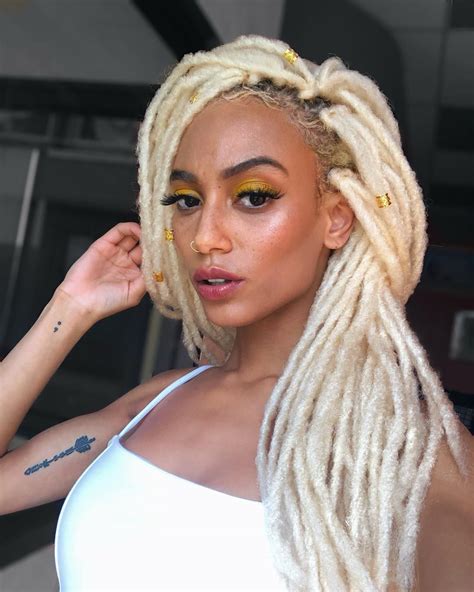Introduction
Kinky braiding hair is a highly sought-after choice for protective styling, transforming hair into intricate and versatile looks. From voluminous braids to elegant updos, this specialized hair extension allows for boundless creativity and expression.

What is Kinky Braiding Hair?
Kinky braiding hair is a synthetic hair fiber designed to mimic the natural texture of kinky or curly hair. It is typically made from heat-resistant materials, such as Kanekalon or Toyokalon, and comes in a range of colors and lengths to suit different styles.
Benefits of Kinky Braiding Hair
- Protective: Kinky braiding hair acts as a shield for natural hair, safeguarding it from heat damage, breakage, and harsh chemicals.
- Versatile: With its adaptability to various braiding techniques, kinky braiding hair offers limitless styling options, from traditional box braids to intricate cornrows.
- Long-lasting: Proper care and maintenance can extend the lifespan of kinky braiding hair to several months, making it a cost-effective option.
- Low maintenance: Once braided, kinky braiding hair requires minimal maintenance compared to natural hair, offering convenience and time savings.
Types of Kinky Braiding Hair
1. Kanekalon: A popular and widely available type of kinky braiding hair, Kanekalon is known for its heat resistance and versatility.
2. Toyokalon: A higher-quality alternative to Kanekalon, Toyokalon offers a softer texture and more natural appearance.
3. Futura: A premium type of kinky braiding hair that is known for its exceptional durability and natural-looking shine.
4. H2GO: A water-resistant type of kinky braiding hair, H2GO is ideal for swimming and other water activities.
Choosing the Right Kinky Braiding Hair
Selecting the appropriate kinky braiding hair depends on several factors:
- Texture: Match the texture of your natural hair to the braiding hair for a seamless blend.
- Length: Determine the desired length of your braids and select hair extensions that align with your goals.
- Color: Choose a color that complements your skin tone and personal style.
- Quality: Invest in high-quality kinky braiding hair that will withstand styling and maintain its integrity over time.
Braiding Techniques with Kinky Braiding Hair
1. Box Braids: Intricate square-shaped braids that create a clean and polished look.
2. Cornrows: Tightly woven rows of hair that run parallel to the scalp, forming intricate patterns.
3. Twists: Two or more strands of hair twisted together to create a soft and voluminous texture.
4. Ponytails: A versatile style that involves gathering all the hair into a high or low ponytail, adorned with a braid or other embellishments.
DIY vs. Professional Braiding
DIY Braiding:
- Pros: Cost-effective, convenient, and allows for experimentation.
- Cons: Time-consuming, requires practice, and may not achieve professional-grade results.
Professional Braiding:
- Pros: Expert techniques, precision, and guaranteed quality.
- Cons: Higher cost and less control over the braiding process.
Care and Maintenance
1. Shampooing: Use a sulfate-free shampoo gently and avoid over-washing.
2. Conditioning: Deep condition regularly with a moisturizing hair mask or conditioner.
3. Detangling: Use a wide-toothed comb or brush to detangle kinky braiding hair gently.
4. Nighttime Protection: Wear a silk or satin bonnet to minimize friction and retain moisture.
Health Benefits of Kinky Braiding Hair
In addition to its aesthetic appeal, kinky braiding hair offers certain health benefits:
- Scalp Protection: Braids create a protective barrier over the scalp, shielding it from sun damage and environmental aggressors.
- Hair Growth: By reducing manipulation and heat styling, kinky braiding hair encourages healthier hair growth.
- Breakage Prevention: The added length and support provided by the braids protect hair from breakage and split ends.
Statistics and Market Trends
According to the American Haircare Association, the market for synthetic hair extensions is projected to reach over $10 billion by 2027, with kinky braiding hair accounting for a significant share. Growing demand for protective styling, particularly among African American women, is driving the market’s growth.
Innovative Applications of Kinky Braiding Hair
1. Faux Locs: Instead of traditional locs, which require extended periods to form naturally, kinky braiding hair can be used to create instant faux locs.
2. Halo Braids: Kinky braiding hair can be attached to a halo headband, allowing for temporary braids without commitment.
3. Microsyn Crocheting: A technique that involves crocheting kinky braiding hair onto natural hair, creating a natural-looking extension.
Comparative Table: Pros and Cons of Kinky Braiding Hair
| Pros | Cons |
|---|---|
| Protective | Time-consuming to braid |
| Versatile | Can be heavy if long |
| Cost-effective | Requires regular maintenance |
| Low maintenance | Can cause scalp irritation if not cared for properly |
Frequently Asked Questions (FAQs)
1. How long do kinky braids last? With proper care, kinky braids can last up to 2-3 months.
2. Can I wash kinky braids? Yes, use a sulfate-free shampoo and avoid over-washing.
3. How often should I retouch kinky braids? Every 2-3 weeks, depending on the growth rate of your natural hair.
4. Is kinky braiding hair heat resistant? Yes, most types of kinky braiding hair are heat resistant up to a certain temperature.
5. Can kinky braiding hair damage my natural hair? No, if braided properly and cared for correctly, kinky braiding hair should not damage natural hair.
6. Is kinky braiding hair suitable for all hair types? Yes, kinky braiding hair is designed to accommodate various hair textures.
7. Can I dye kinky braiding hair? Yes, but it is recommended to test a small section first as the dyeing process can vary depending on the type of hair.
8. How do I remove kinky braids? Use a braid remover or scissors to carefully cut the braids, then use warm water and shampoo to gently wash away any remaining hair extensions.
